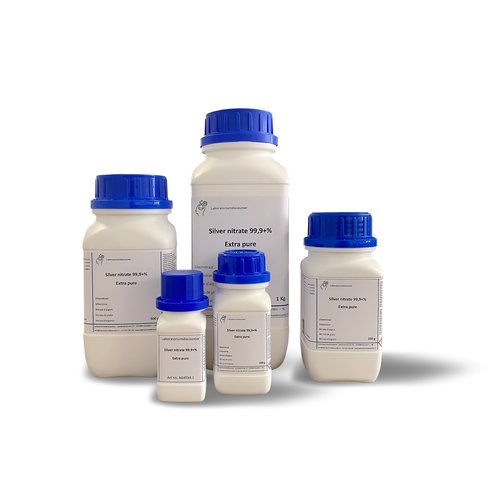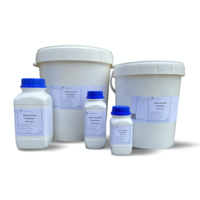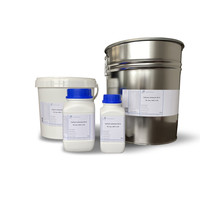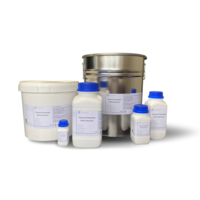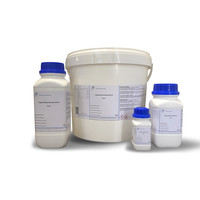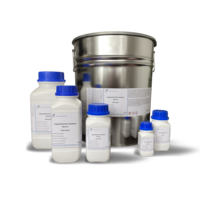You have no items in your shopping cart
Silver nitrate 99.9 +% Extra pure
- Buy 3 and save 5%
- Buy 6 and save 10%
What is Silver Nitrate?
Silver nitrate is an inorganic compound with the molecular formula AgNO3.
What is Silver Nitrate used for?
In particular, it is used in Tollens' reagent for aldehyde recognition tests.
It is also used to identify Cl chloride ions (a white precipitate forms that darkens in daylight). The reaction that takes place is then: Ag + (aq) + Cl- (aq) → AgCl (s)
Solutions of silver nitrate give metallic silver on contact with light. In the case of stains made from silver nitrate (on clothes, floors, etc.), the only way to clean them is to leave a saturated solution of ferricyanide on for a few minutes or overnight for greater efficiency. red solution does not fix the tissues), a slight change in the color of the spots is observed due to the formation of water-soluble silver ferricyanide.
It is an external antiseptic, corrosive agent. It is used diluted in ophthalmic solutions.
Nitrate and silver halides (silver bromide, silver chloride and silver iodide) turn black after exposure to light: they are used in emulsions for photographic plates, film and paper. Their salts are soluble in sodium thiosulfate, a compound used in the photographic fixation process.
It is also used in silver plating, making mirrors, indelible and invisible inks, coloring porcelain, and dyeing hair.
In medicine, more specifically in podiatry, silver nitrate can be used to treat ingrown toenails. In fact, it allows to dry the growths of the skin that develop on the nail (in the same way as lead nitrate).
In otolaryngology, it is used for short-term cauterization of the nose.
In oligotherapy, an alternative medical practice, silver nitrate is used as a "field modifier" in viral infectious states of the ENT, flu-like conditions, and mouth ulcers.
Buy silver nitrate?
You can buy pure silver nitrate at Laboratoriumdiscounter.nl. A friendly price and delivered quickly. Available in different packaging and always with volume discount.
Technical data:
Empirical formula AgNO3
Molar mass (M) 169.88 g / mol
Density (D) 4.35
Boiling point (bp) 290-440 ° C (dec.)
Melting point (mp) 212 ° C
Solubility 2160 g / l (H2O, 20 ° C)
ADR 5.1 II • WGK 3
CAS No. [7761-88-8]
EC no. 231-853-9 • UN No. 1493
Downloads
$$$$$
Hazard statements
H272 May intensify fire; oxidizing
H290 May be corrosive to metals
H314 Causes severe burns and eye damage
H410 Very toxic to aquatic life with long lasting effects
Precautions - prevention
P273 Avoid release to the environment.
P280 Wear protective gloves / eye protection.
Precautions - response
P303 + P361 + P353 IF ON SKIN (or hair): Immediately contaminate clothing
pull out. Rinse skin with water [or shower].
P305 + P351 + P338 IF IN EYES: Rinse cautiously with water for a long time
amount of minutes; remove contact lenses, if possible; keep rinsing.
P310 Immediately call a POISON CENTER / doctor.




